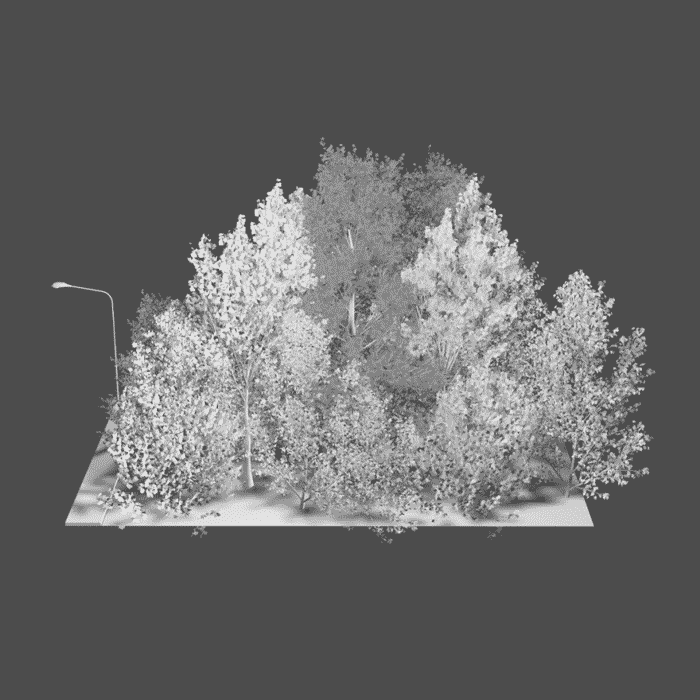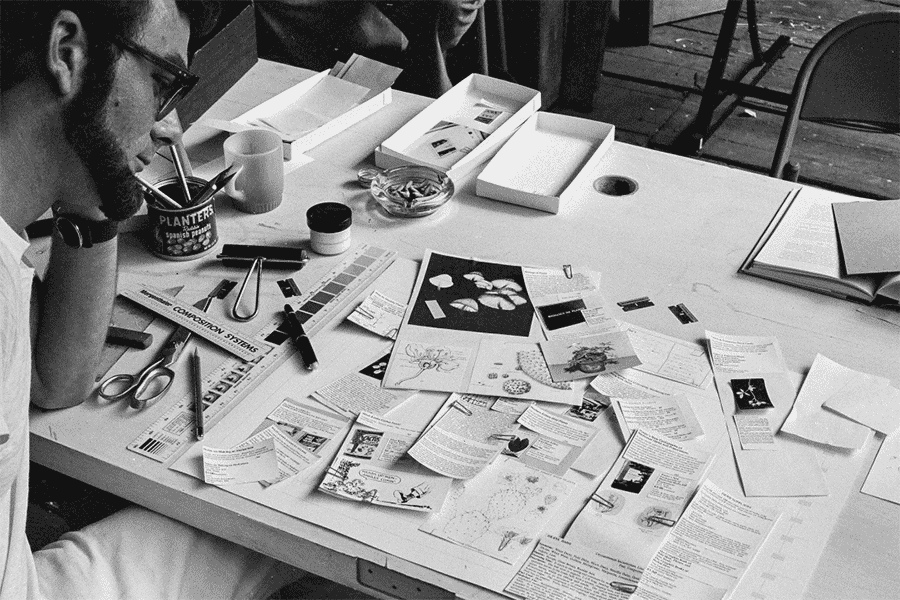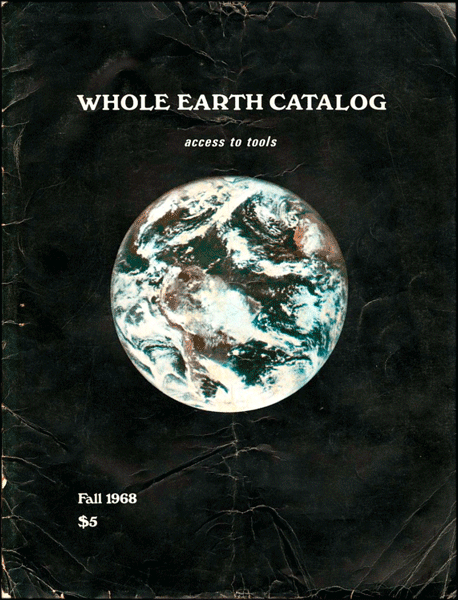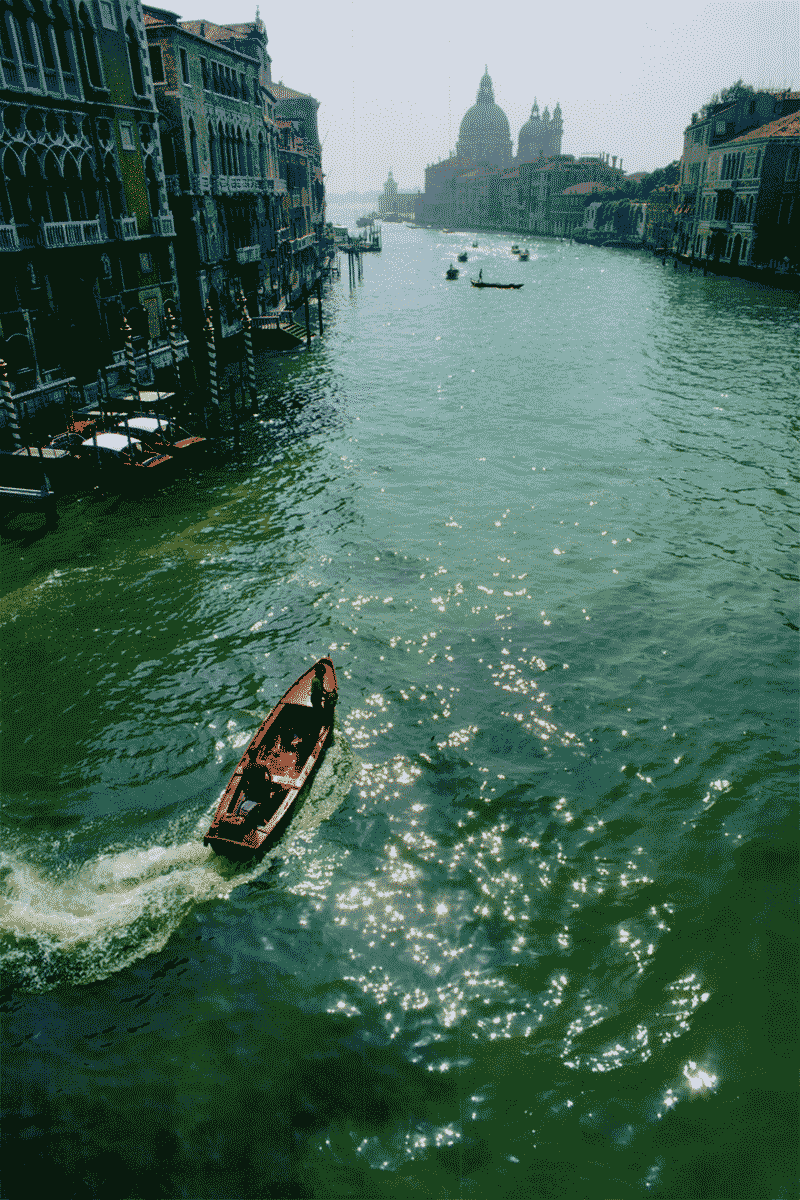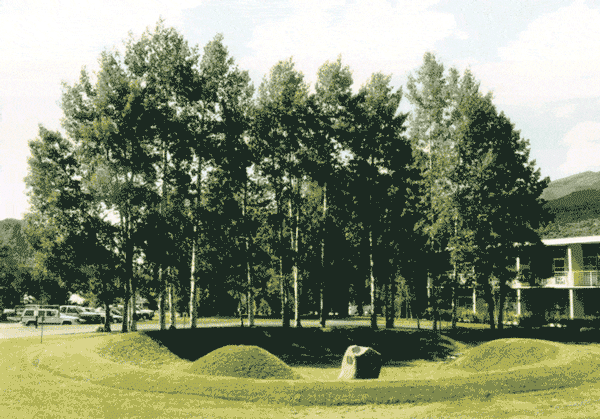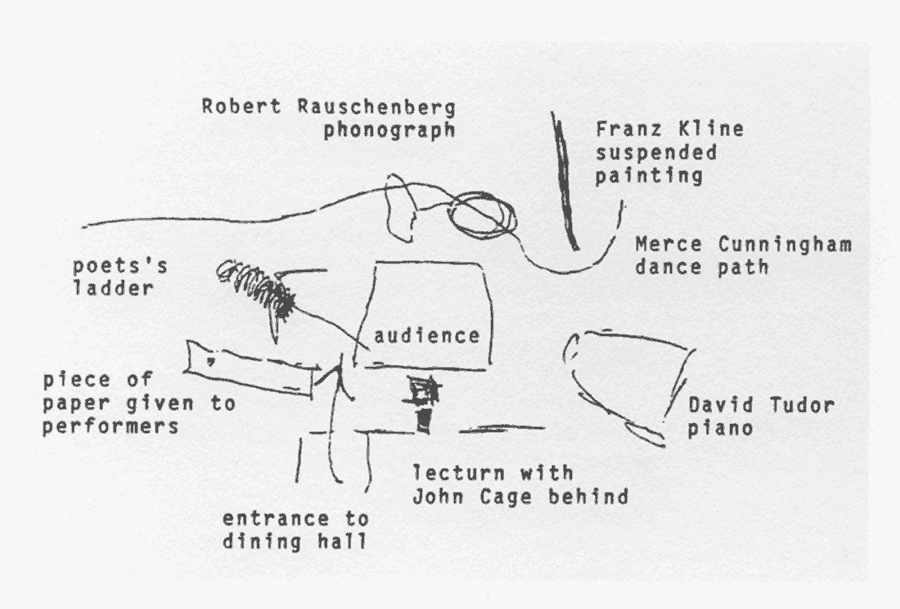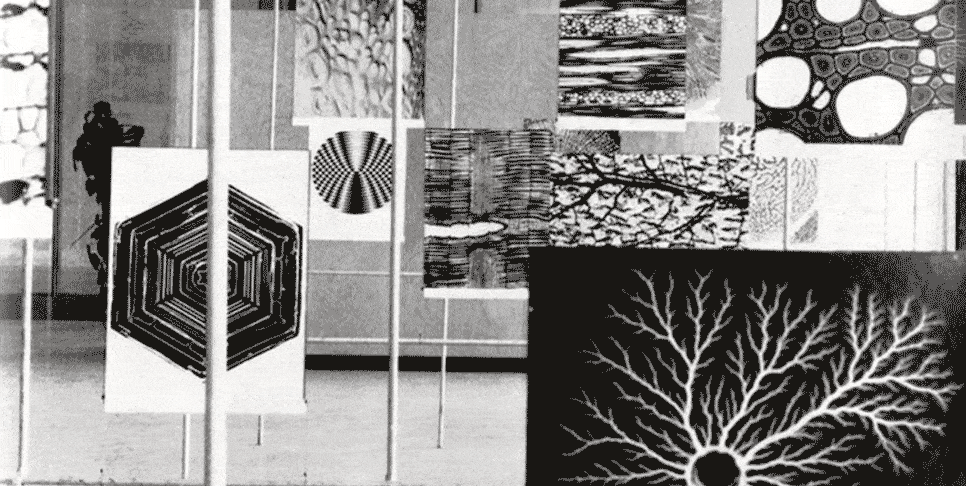Visual Natures 1/3
by Beatrice Leanza
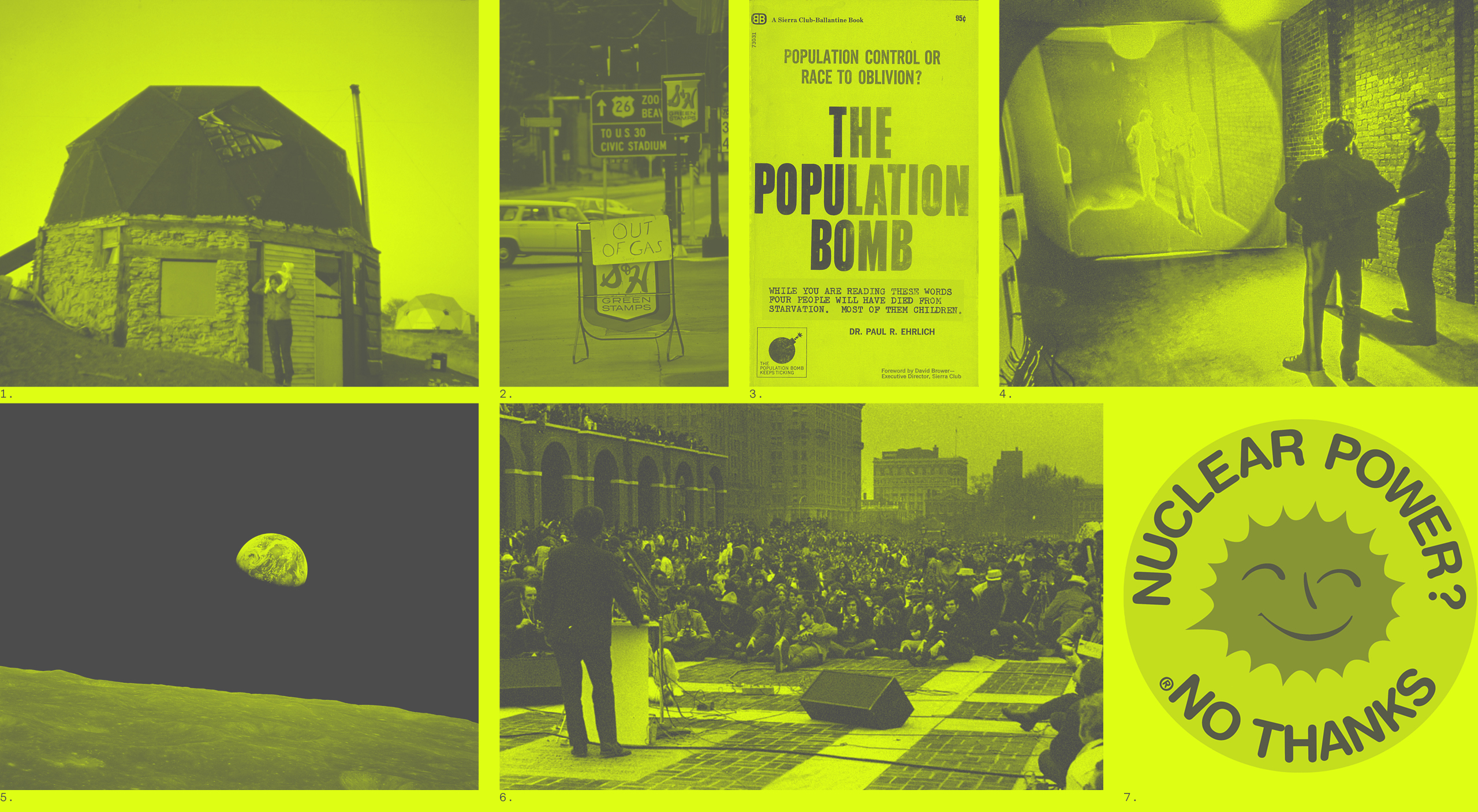
1. Drop City, 1966. Courtesy: Gene Bernofsky.
2. “The Oil Crisis”. Photo: David Falconer, DOCUMERICA: The Environmental Protection Agency’s Program to Photographically Document Subjects of Environmental Concern, 1972–1977.
3. Paul R. Ehlrich, The Population Bomb (Sierra Book Club-Ballantine, 1968).
4. Pulsa, Untitled (Automation House Installation), 1971. Pulsa Records, courtesy of Department of Special Collections, Stanford Libraries.
5. Earthrise, 1968. Foto: William Anders (astronauta, Apollo 8). NASA / Bill Anders.
6. Celebração do primeiro Dia da Terra, 1970 © Earth Week Committee of Philadelphia.
7. “Nuclear Power? No Thanks!” (aka Smiling Sun), 1970–1980.
Environmental concerns started to gain Western societies’ widespread attention in the 1960s and over the following decade of rambunctious social activism, when pioneering contributions from various disciplinary sectors, ranging from computer science to economics, began to circulate in publications that are today considered foundational in modern environmental thought. Rachel Carson’s Silent Spring (1962), Stewart L. Udall’s The Quiet Crisis (1963), Paul R. Ehrlich’s The Population Bomb (1968) and The Limits to Growth (1972), penned by a group of scientists at the Massachusetts Institute of Technology (MIT), to name just a few, brought to public knowledge the depleting impact of human actions onto the natural ecosystem. Conjuring insights from biological and chemical analysis to system theory and meteorology, scholars and scientists in post-war Europe and the US were looking at a world of exponential demographic growth and increasingly consumptive lifestyles threatened by natural resource scarcity and the degenerating effects of atmospheric pollution caused by fossil fuel combustion pumping industrial productivity. Intellectual preoccupations around human survival in a diminishing planet that accompanied this apocalyptic horizon had already made an appearance in the period following the Industrial Revolution. The environmental theories of economists and philosophers like Thomas Robert Malthus (1766–1834), John Stuart Mill (1806–1873), Henry David Thoreau (1817–1862), George Perkins Marsh (1801–1882) and John Muir (1838–1914), among others, advocated for a necessary transformation of man’s relationship with nature by way of ecological practices of conservation, preservation of biosystems, alternative resource management and consumption control.
A resonating desire to reset the moral and scientific foundations of western modernity and the exploitative systems of its capitalist industry and colonial powers imbued the revolutionary spirit of the 1960s and 1970s civil rights movements, anti-war and anti-nuclear campaigns, and students protests for social justice. It also invigorated cultural and artistic debates voted to restorationist environmental practices and cross-disciplinary collaborative interactions inspired by back-to-nature communalism as much as cybernetics’ techno-utopianism.
The artists, designers and creative technologists of this era were devoted to experiencing a new and expanded form of environmental homeostasis, one that involved experimentation with earth materials and landscape, farming and urban greening, as well as automated bio-technological symbiosis merging science, art and engineering seeking resonance between organic and non-organic systems.
In 1973, Norwegian philosopher Arne Næss introduced the term “deep ecology” to address the environmentalist movement and its concern with an ethic respecting nature, which promised an alternative culture of ecological integrity, a better way of life for human societies not in opposition to nature or limited by the need for ecological restraint but liberated and fulfilled by a new holistic and relational conception of the natural world. Underscored by three essential themes – ecocentrism, sufficiency and embeddedness – deep ecology argued for fundamental shifts in the culture that underpins technocentric, dominating and exploiting structures and practices, offering an alternative set of values for human self-realisation rooted in an ecocentric conception of life.
Already by the mid-late 1960s the intensifying political and corporate mobilisation of scientific research aided by ground-breaking meteorological and computing studies pointed at incontrovertible evidence of the man-made origins of atmospheric degradation and a future of extreme weather phenomena. While the events unfolding during the decades until the late 1980s ushered in major intergovernmental initiatives and accords – like the first United Nations Conference on the Human Environment in Stockholm (1972) and the establishment of the Intergovernmental Panel on Climate Change (IPCC, 1988); foundational legislation and agreements, like the Clean Air Act (CAA, 1963, USA) and the Montreal Protocol (1987); and civic organisations and social movements, like the World Wildlife Fund (WWF, 1961) and Greenpeace (1971) – they also revealed the enduringly competing interests of oil companies and global corporate-states which are still haunting today’s environmental politics and the life of disenfranchised populations in the Global South.
Earthworks: Expanded Fields
By the late 1950s governments and oil executives, particularly in the US, were already aware of the anthropogenic origins of increasing concentrations of carbon dioxide in the atmosphere and of the perils that was posing to the climate. In fact, in 1895 the Swedish chemist, and later Nobel Laureate, Svante Arrhenius had already connected the variations in concentrations to rising surface temperatures, a theory that was eventually demonstrated in 1938 by the English engineer Guy Stewart Callendar and whose predictions of climate sensitivity at around 2 degrees proved extremely accurate.
During the 1950s progress in computer science and information technology galvanised artistic research and social change as much as climate studies. Pioneer meteorologists like Charles D. Keeling and Roger Revelle developed accurate measurements of CO2 concentrations and climate change predictions that eventually informed official governmental documentation. “Restoring the Quality of our Environment”, a special report for President Lyndon Johnson, already warned of associated phenomena of global warming like sea-level rising and acidification in 1965.
Environmental degradation also became a matter of open public concern as experts’ views and scientific chronicles started being published, bringing correlative facts to the unravelling ecological destruction perpetuated by the capitalist dream of endless accumulation. Harold J. Barnett and Chandler Morse’s 1963 book Scarcity and Growth concluded that the true threat for the industrialised world would be “the indirect effects” of “pollution”, “noxious gases” and “lands denuded”.
The emergent environmental artistic practices of the time responded to this state of affairs by seeking an experiential and spiritual reconnection to nature that abandoned the safeguarded, contemplative spaces of galleries and institutions, and found expression in the expanded spatial and formal politics of Earth and Land Art – material and performative explorations that celebrated, monumentalised and activated an ecological practice of restorative proximity with the natural world.
These included forays into deserts, canyons and mountains – of which notable examples are the works of Robert Smithson, Christo and Jeanne-Claude, Robert Morris and Heinz Mack, among many others, as well as reversed forms of “speculative conservationism” that displaced practices of organic farming, planting and greening into the urban context, like in the projects of Alan Sonfist, The Harrison Studio and Agnes Denes.
A desire to reach into a new world of biotechnological interconnectivity emerged too – the communion between science, art and technology found an eminent precursor in the Centre for Advanced Visual Studies (CAVS), a research institute founded in 1967 inside MIT by the multihyphenate Bauhaus disciple György Kepes, which paved the way for collaborative practices among artists, scientists and engineers for years to come.
New Communalism
For the countercultural movements of America of the 1960s and 1970s, the technocratic politics of control of the industrial era were responsible for the disintegration of the material environment as much as the commodification of social consciousness. A return to a simpler, back-to-nature form of egalitarian living and collaborative work was an essential aspect of the political struggle, one that fought alienation with collective liberation. It is estimated that around 750,000 people lived in more than ten thousand communes in the United States in the early 1970s. For the back-to-the-landers, life in self-sufficient retreats was a means to regain interpersonal intimacy, fight bureaucratic control and build a resilient society. Books like Theodore Roszak’s The Making of a Counterculture (1969) and Charles A. Reich’s The Greening of America (1970) shaped the intellectual frameworks of the movements that swept those years of societal revolution and youth demonstrations.
Creative experiments in communalism and cross-disciplinary collaboration thrived, from the experiences of the legendary hippie commune Drop City (1965–1973) to collectives’ experiments like those of Ant Farm, PULSA and USCO (The US Company), predicated on the intersecting of artistic languages and new-media technologies, and design principles of self-sufficiency and circular regeneration encapsulated by the then ubiquitous domes and inflatable structures.
The collegial spirit that animated fellowships like the Lindisfarne Association, the ideas of frugal, DIY self-reliance and simplicity advocated by theorists like Victor Papanek (Design for the Real World, 1971), E. F. Schumacher (Small is Beautiful: A Study of Economics as if People Mattered, 1973) and Barry Commoner (The Closing Circle – Nature, Man and Technology, 1971) had particular resonance during the years of the Oil Crisis (1973–1974), and the precipitating alarms once again sounded by official studies like the so-called Robinson Report (1968), which noted that CO2 emissions from fossil fuels were outstripping the natural CO2 removal processes that keep the atmosphere in equilibrium.
Technology and Environmental Consciousness
Rather than adopting an abstract approach to ethical value, “deep ecology” was predicated on a lived or intuitive ethics, being ultimately experiential, thus constituting a “new heuristic of future possibilities”. By the late 1980s the “deep green” philosophy had coalesced into a fully critical discourse that saw the environmental crisis as an opportunity for metaphysical reconstruction and moral development. The revolutionary progress that computational studies had brought to the fields of system theory and cybernetics from the 1950s (Norbert Wiener, Cybernetics: or Control and Communication in the Animal and the Machine, 1948) permeated the philosophical ethos of social revolutions with a new paradigm of interconnectedness and liberation.
The emergent techno-culture of individualised and networked computing that the initiation of the ARPANET project (the precursor of the Internet) heralded offered a “vision of the world built not around vertical hierarchies and top-down flows of power, but around looping circuits of energy and information” (Fred Turner, From Counterculture to Cyberculture, 2006).
Its scripture: a serialised publication started by Stewart Brand in 1968 titled the Whole Earth Catalog, both guide and literal manual for the techno-utopian way of life. It famously featured on the cover of its inaugural issue The Blue Marble, the photo of Earth taken from outer space by the Apollo 8 mission, an image that has come to symbolize a transformed and expanded consciousness about the world and its fragility.
By the late 1970s, as official scientific enquiries deepened understanding of the correlation between anthropogenic CO2 emissions and global warming (the JASON Report, the Charney Report, both in 1979), civic action had also increasingly mobilised, the first Earth Day being established already in 1970. A decade later, with the alarming growth of the ozone hole due to CFCs gases generated by industrial manufacturing, climate preoccupations became increasingly focused on their wider social and economic repercussions.
A new ecological paradigm of sustainability entered the global sphere, giving way to the 1990s era of “green politics” and ever-intensifying intergovernmental talks and civic actions, starting with the publication by the United Nations Organisation of Our Common Future (1987), also known as the Brundtland Report, credited to bring environmental concerns onto the political agenda, and the establishment of the Intergovernmental Panel on Climate Change (IPCC) in 1988. Published the same year, Félix Guattari’s The Three Ecologies becomes the intellectual cornerstone of an expanded ecological awareness – environmental, social and mental – founded on a planetary ethics harshly critical of the destructive forces of capitalism and its individualistic anthropocentric credo.
Illustration: Lisa H. Moura.
Visual Natures (maat, 30/03 – 05/09/2022) is the product of more than two years of critical investigations around climate science, creative practices and eco-politics. A continuation of the data-driven installation Earth Bits – Sensing the Planetary and the public programme Climate Emergency > Emergence, both conceived and ignited by Beatrice Leanza during her directorship of the museum, the project surveys political, social and cultural forms of collective agency from the 1950s onwards that demonstrate how our understanding of “nature” informs the ways in which we organise, sustain and govern our communities as an expanding planetary construct, in concept and in practice.
On maat ext., the series #groundworks introduce the critical explorations that feed into the complex interconnectivity between the environmental and energetic quests and its reverberation through decades of artistic creation and cultural dynamics, traced from the 1950s until today, and continues these investigations through collaborations with artists, curators, archivists, researchers and activists on their work and the meanings of ecology, environmentalism and societal responsibilities in the face of climate change.
Explorations is a programme framework (maat, 2020–2022) featuring a series of exhibitions, public and educational projects delving into the multi-faceted subject of environmental transformation from various scholarly and experimental vantage points – it brings philosophical and political perspectives forward, as well as sociocultural and technological investigations interwoven in speculative and critical practices in the arts and design at large. Central to this discursive and critical effort was the establishment of the maat Climate Collective in 2021, chaired by T. J. Demos, and geared toward assembling diverse cultural practitioners working at the intersection of experimental arts and political ecology.


